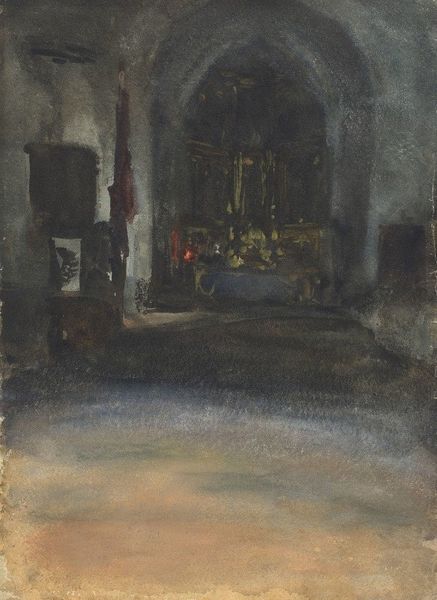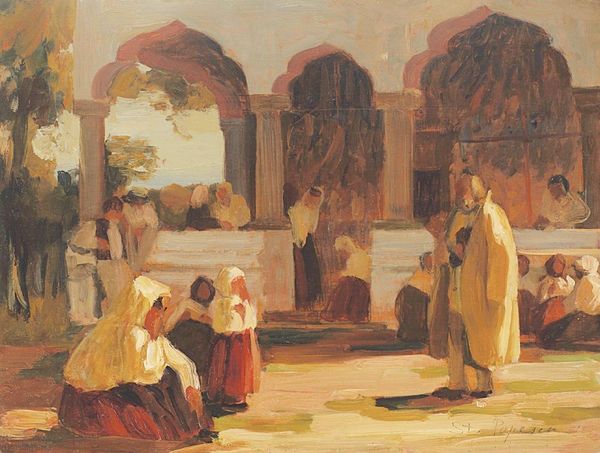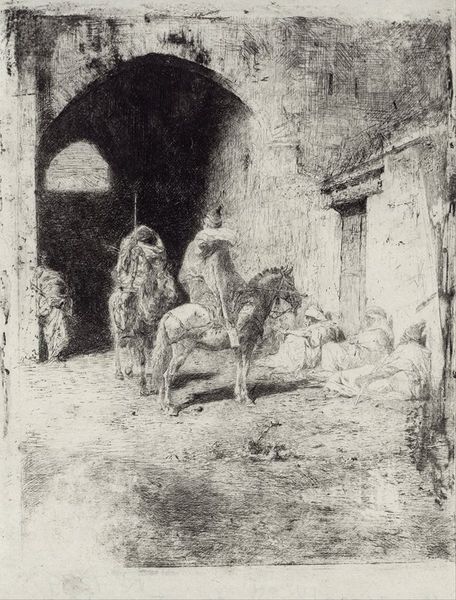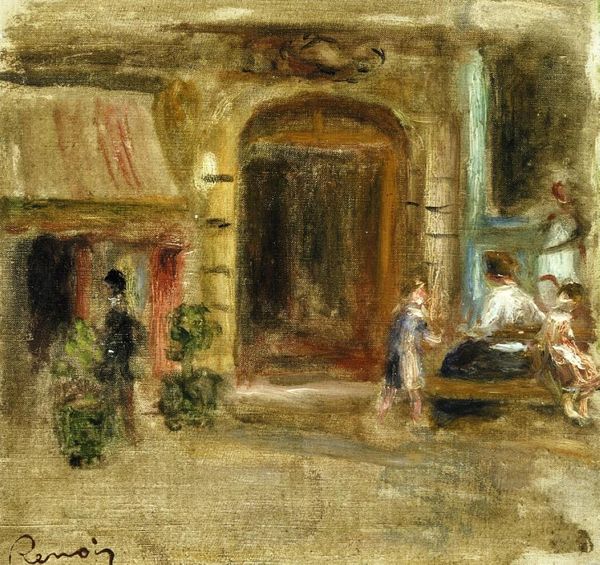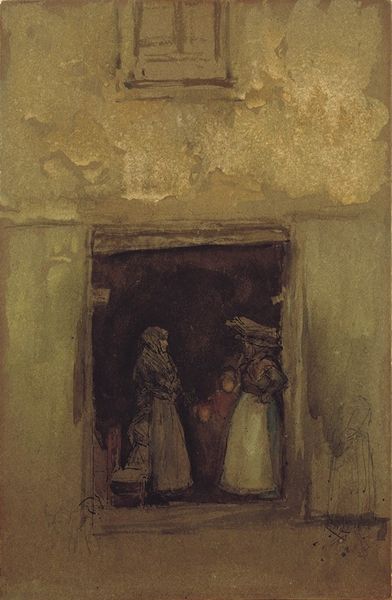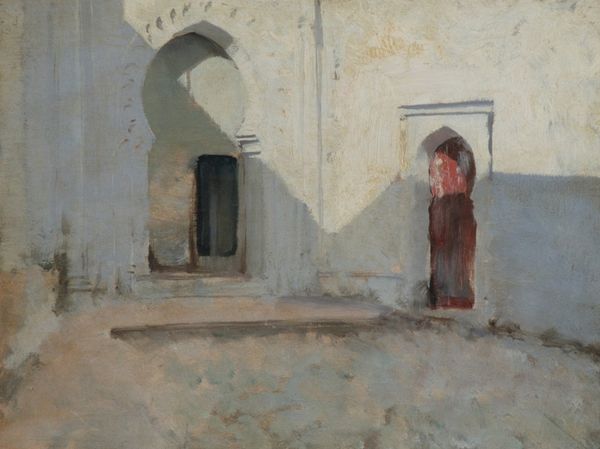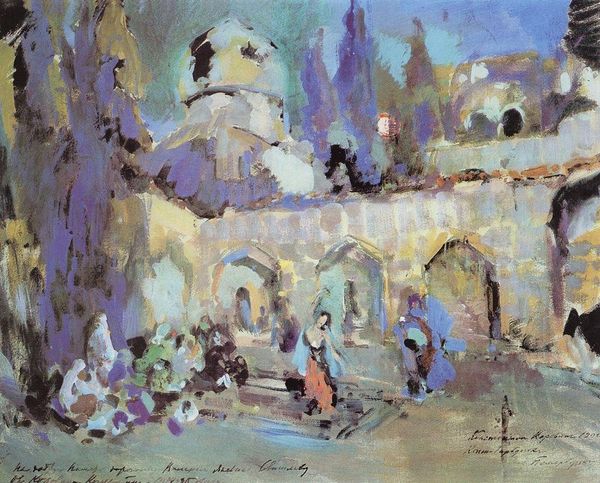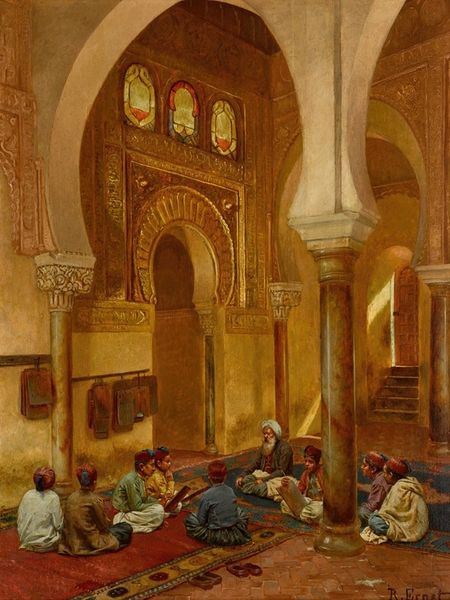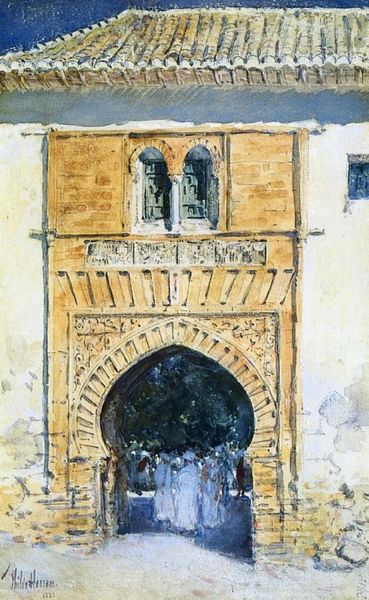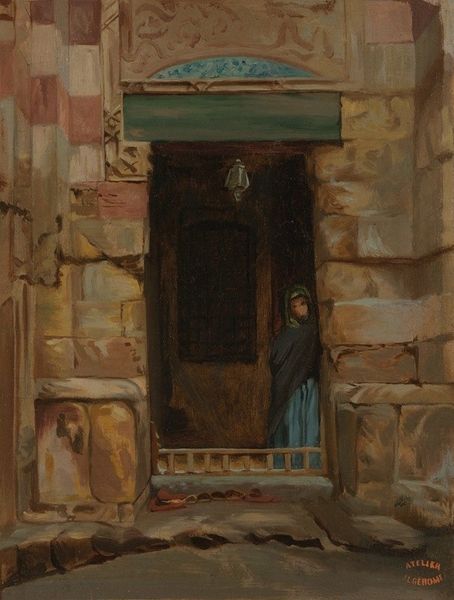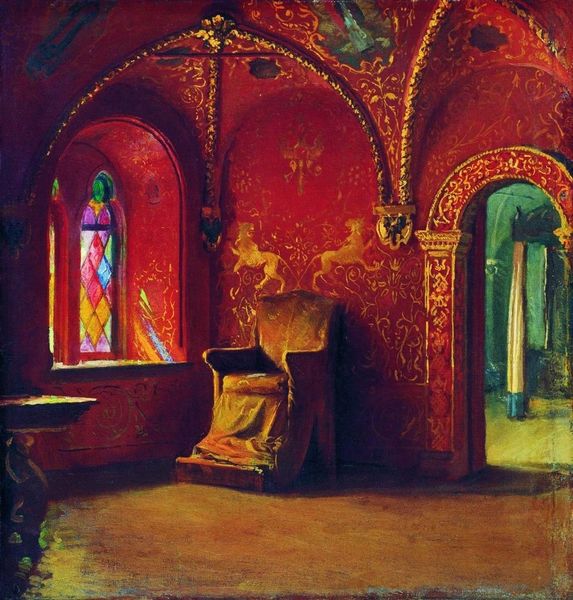
painting, oil-paint
#
painting
#
oil-paint
#
oil painting
#
orientalism
#
genre-painting
Copyright: Public domain US
Editor: Here we have Samuel Mutzner’s "Quarter in Tunis" from 1920, an oil painting. The warm colors create a cozy atmosphere, but I am curious how the historical context might shape its meaning. What can you tell us about how the era might inform our interpretation of this piece? Curator: Well, seeing a European artist depict North Africa in 1920 immediately prompts questions of Orientalism. These kinds of genre scenes, depicting everyday life in the "exotic" East, were quite popular with European audiences. We should ask ourselves, who is this painting really for? Whose gaze does it cater to? Editor: That’s fascinating. So, instead of just seeing a snapshot of life in Tunis, we have to consider how the image might have been designed to appeal to a certain European audience. The lighting is very dramatic – is that a common element? Curator: The use of light is definitely intentional. It's almost theatrical, spotlighting certain figures and creating a sense of mystery. Is it emphasizing an “authentic” cultural experience, or is it perpetuating a romanticized vision of the East for Western consumption? Are we seeing real life, or an exoticized fantasy crafted for a particular market? Editor: That's a lot to consider. So looking at "Quarter in Tunis", it's not enough to simply appreciate the technique. We have to also think about the power dynamics involved in its creation and reception. Curator: Exactly! We should be thinking critically about how this artwork functions within broader historical and cultural narratives of colonialism and representation. It gives us a lot to reflect upon! Editor: I will definitely carry that forward when viewing this and similar paintings. Thanks!
Comments
No comments
Be the first to comment and join the conversation on the ultimate creative platform.

